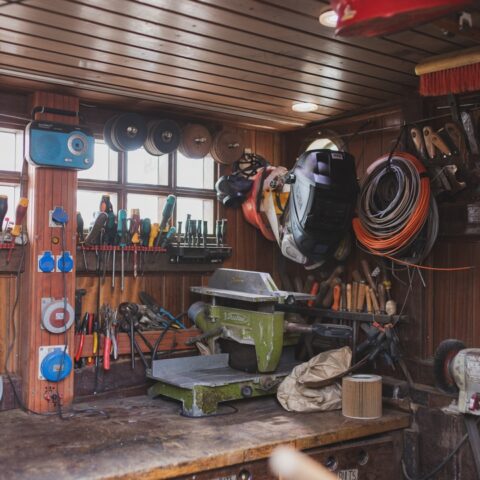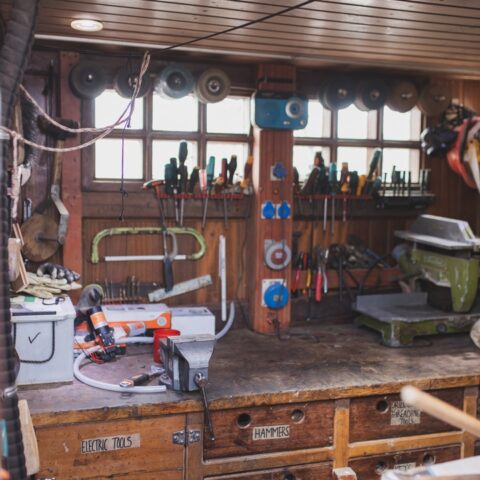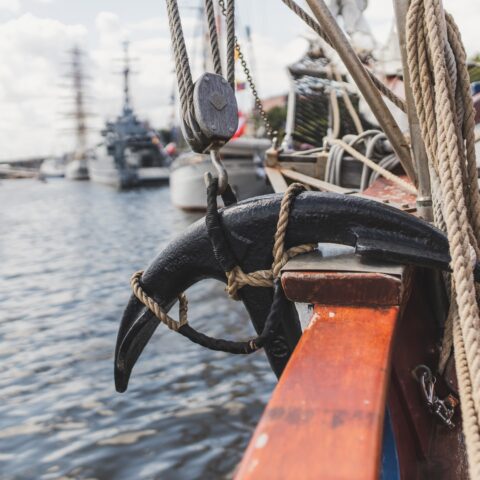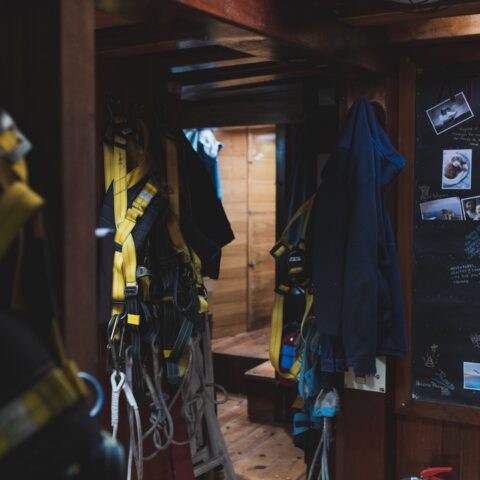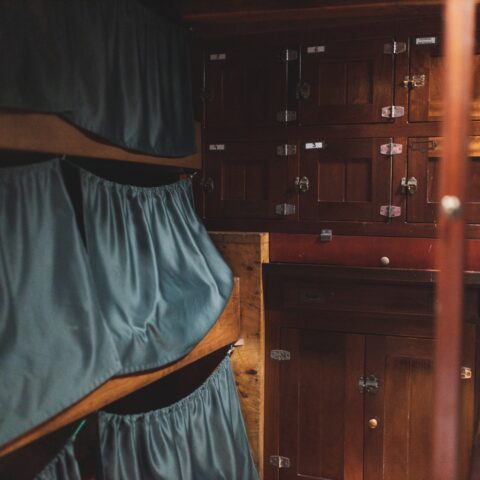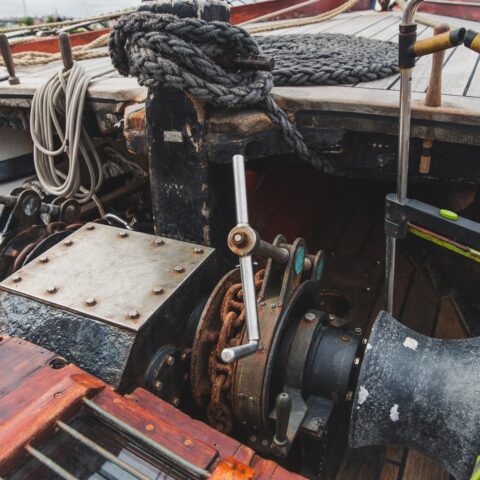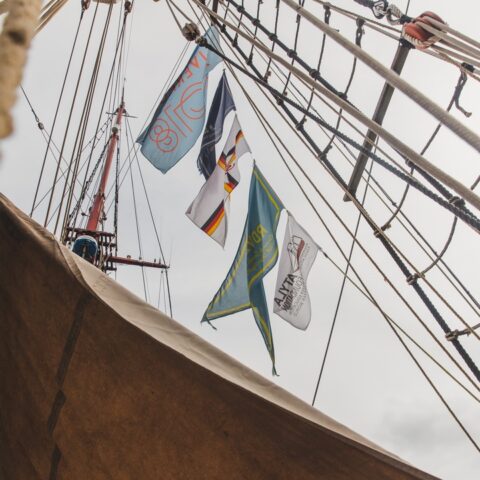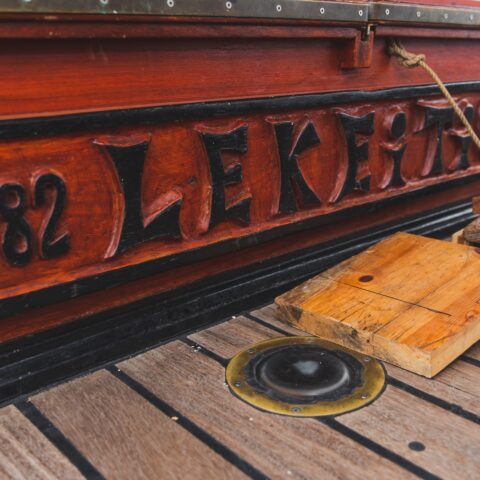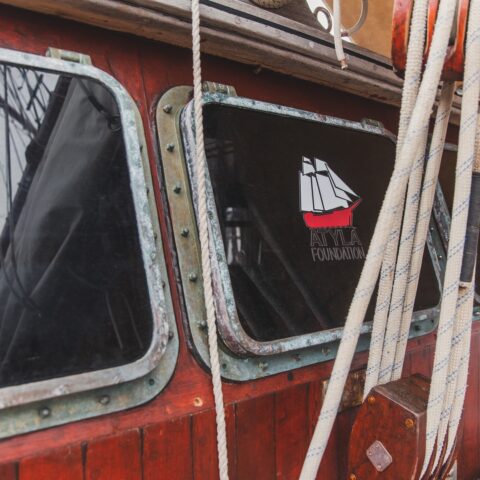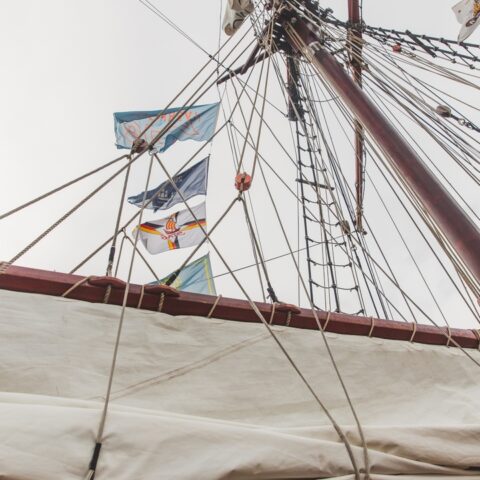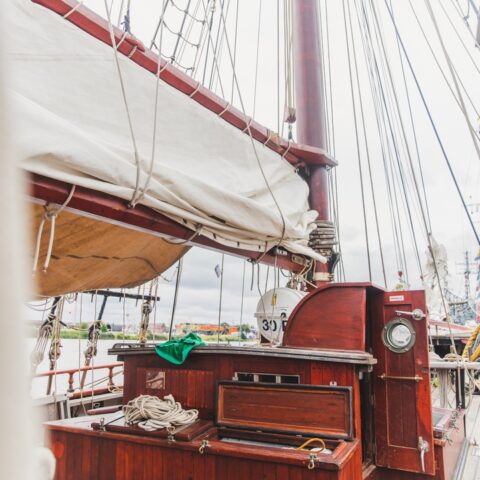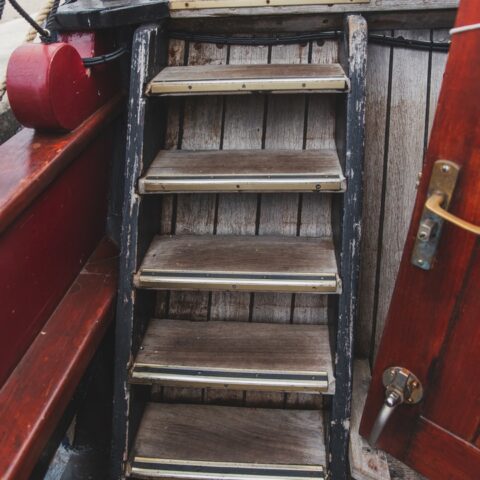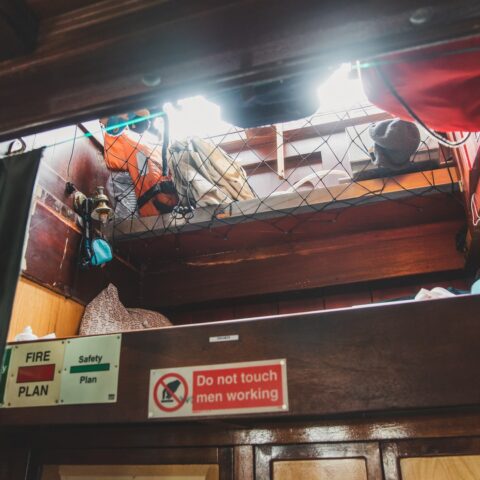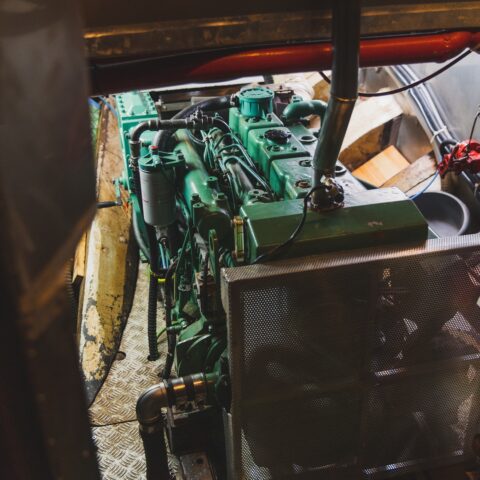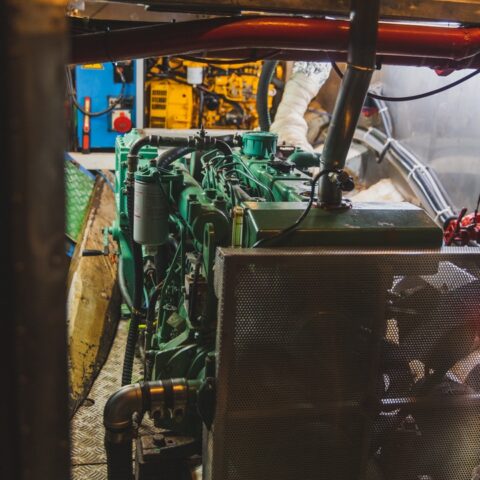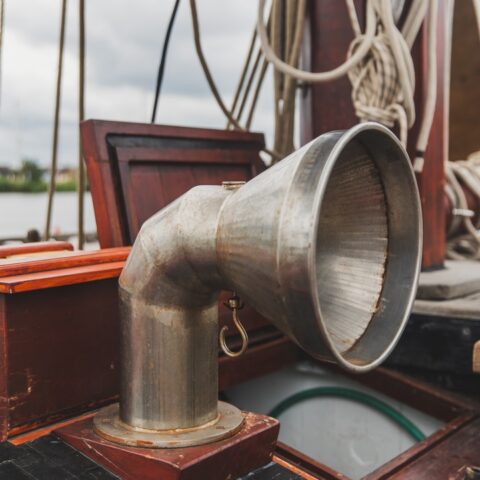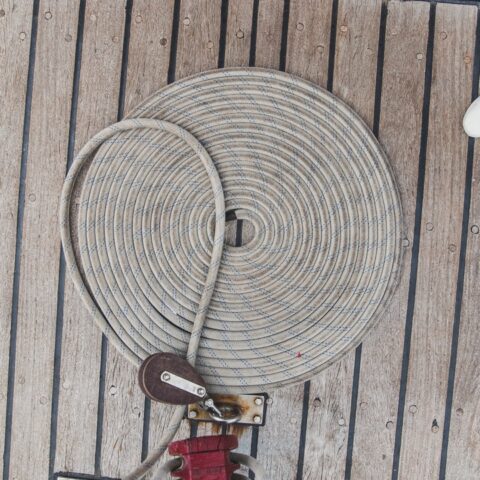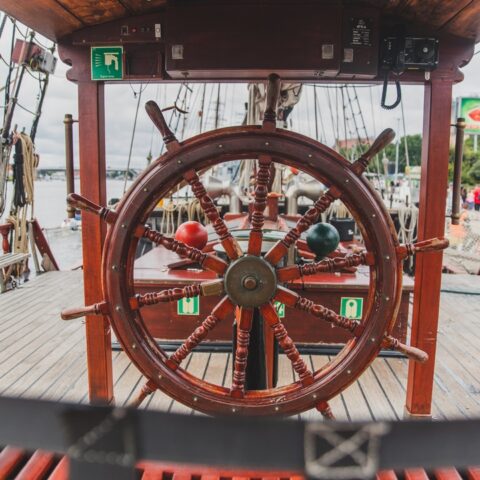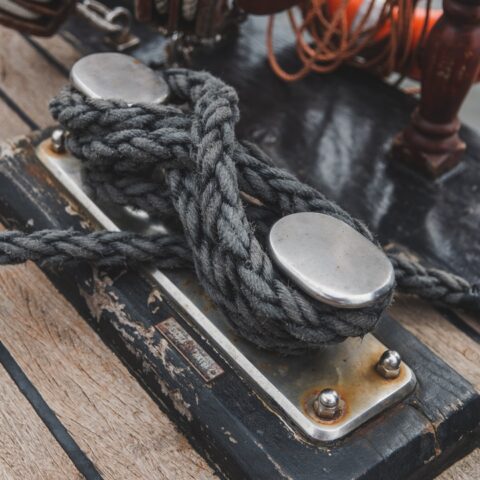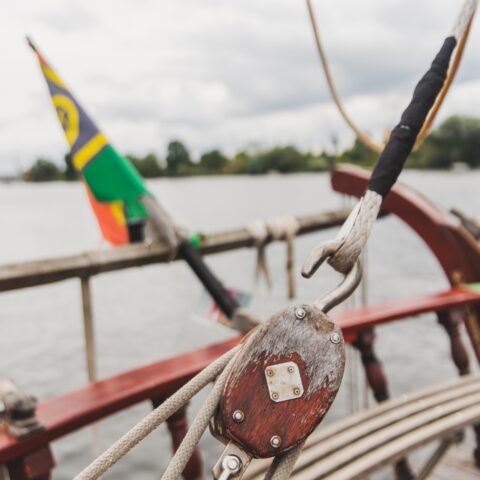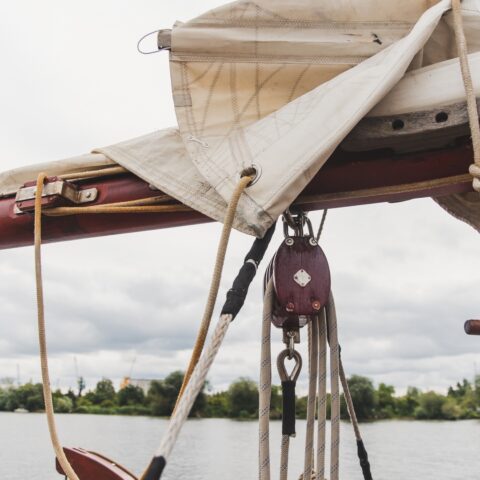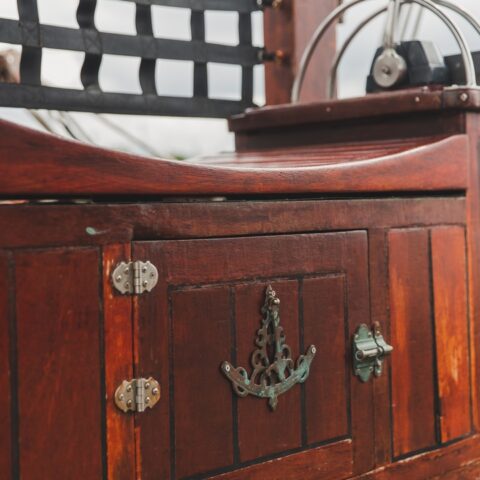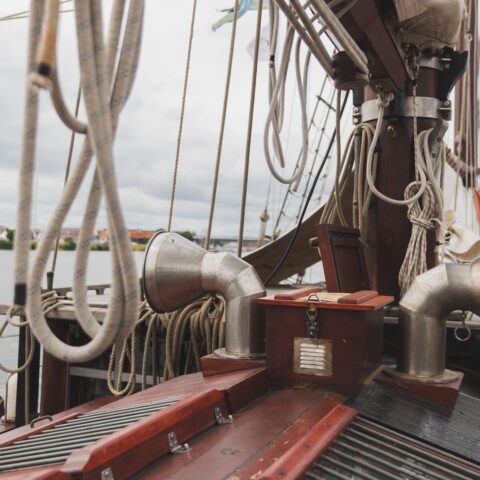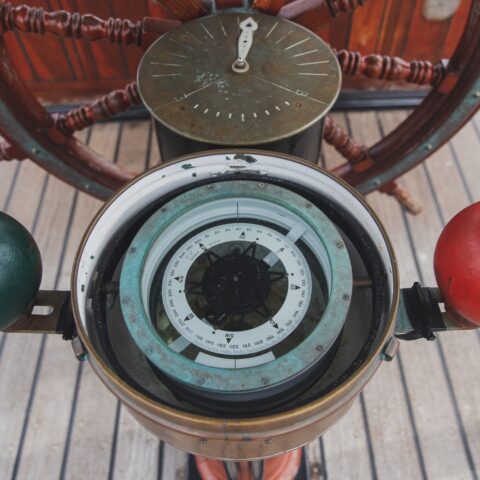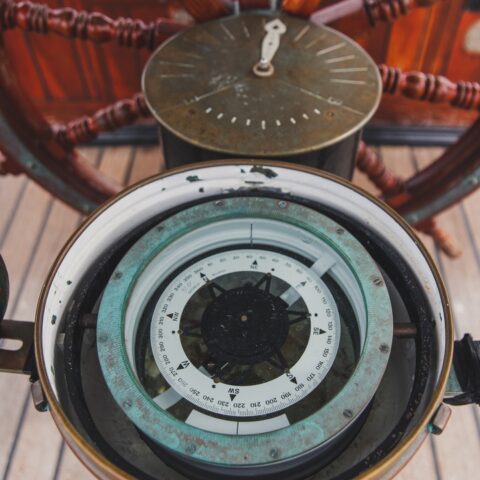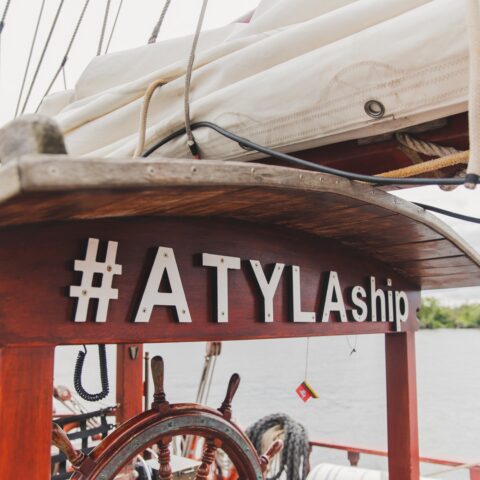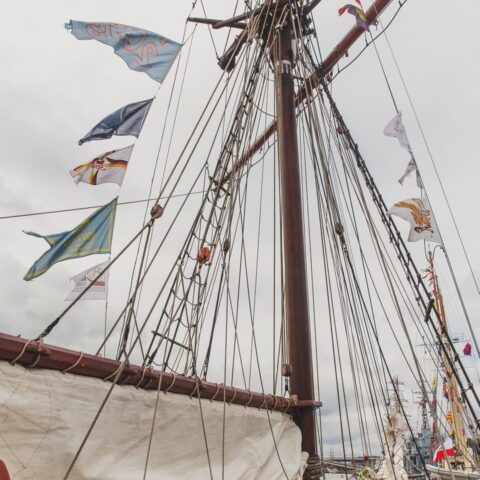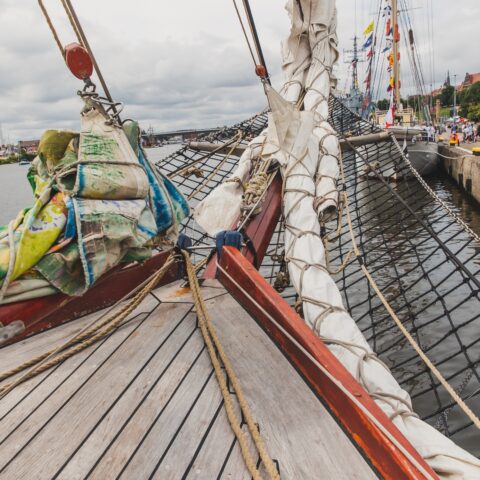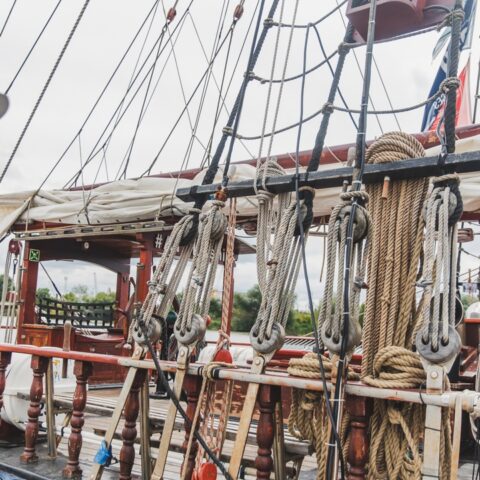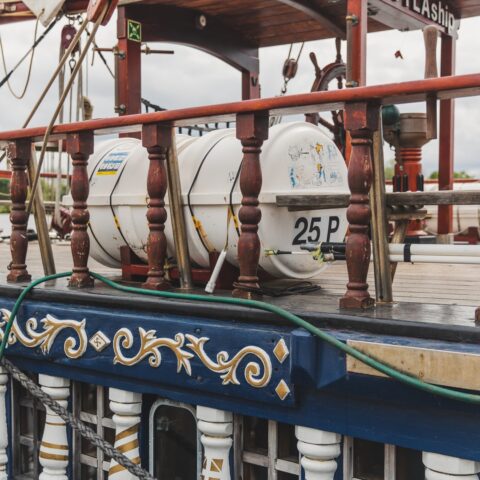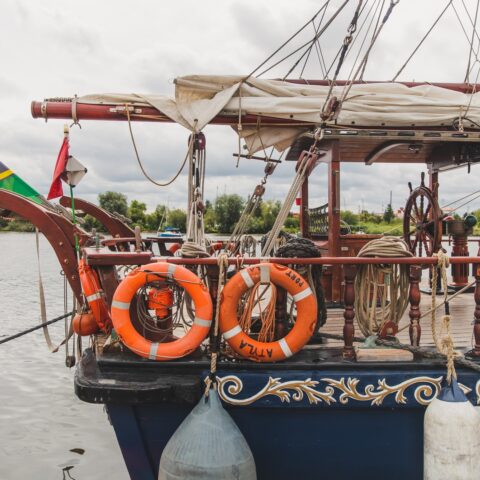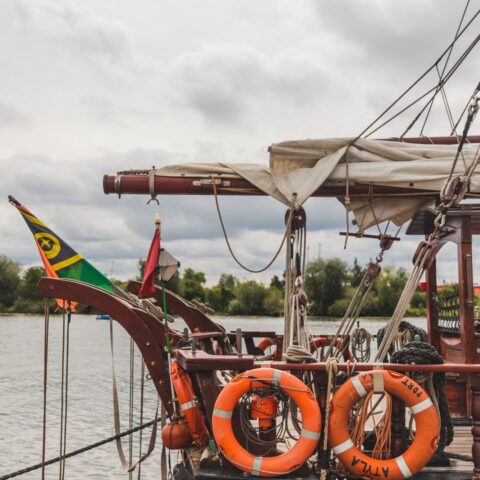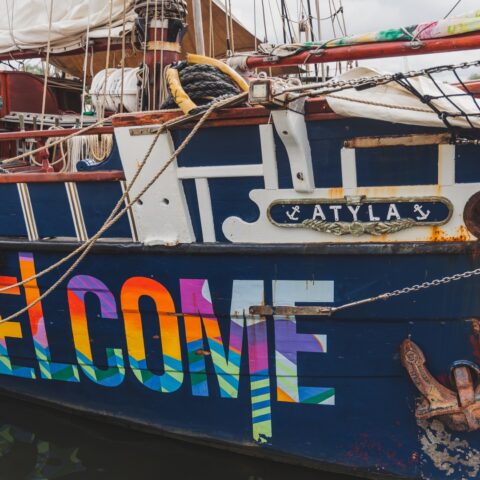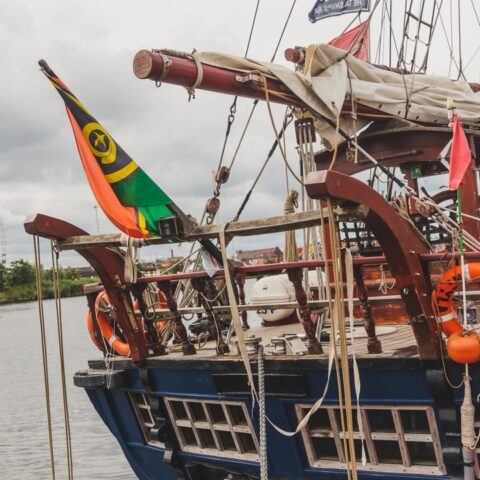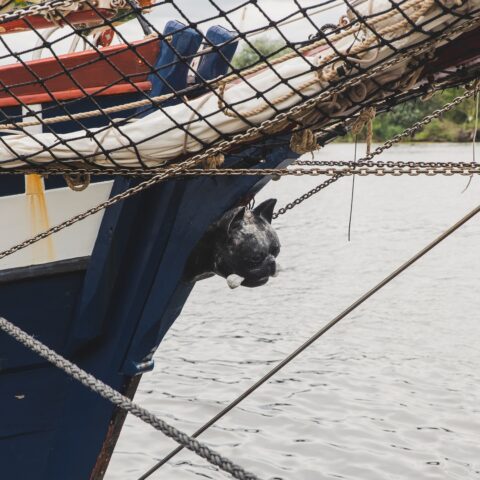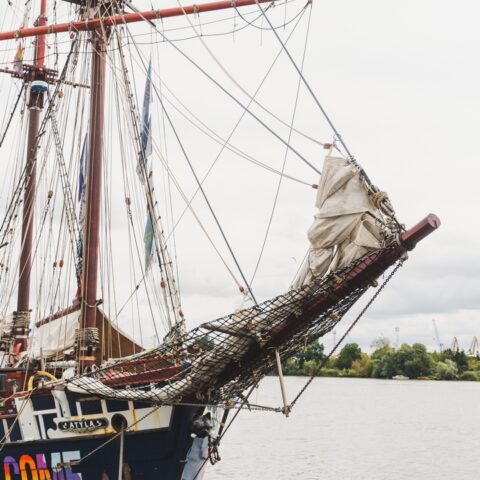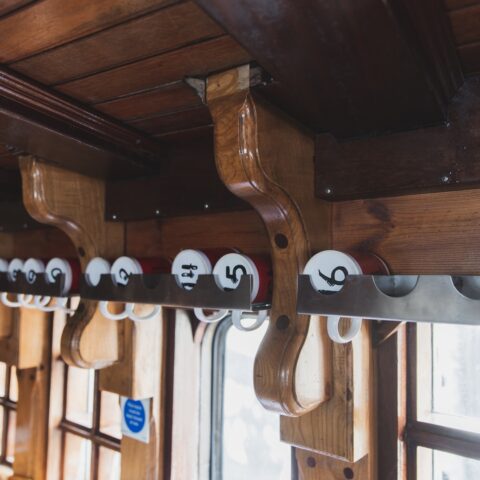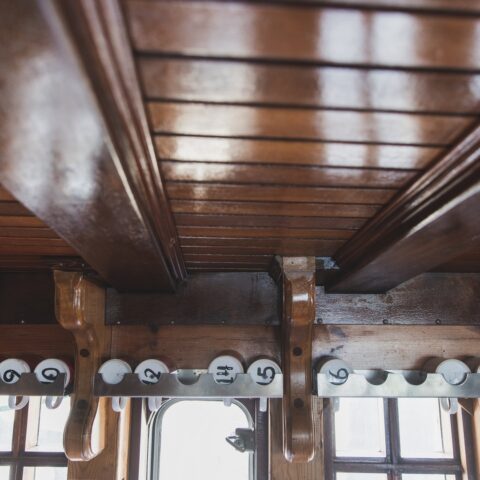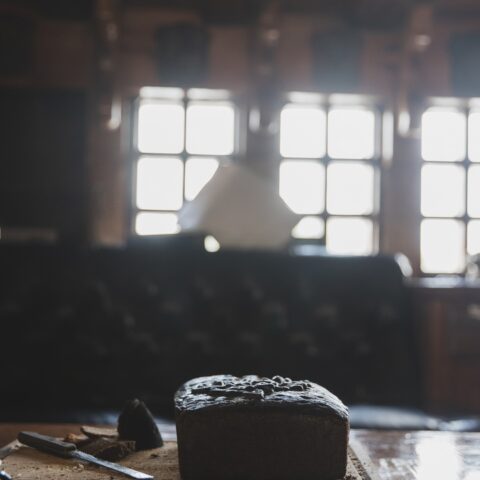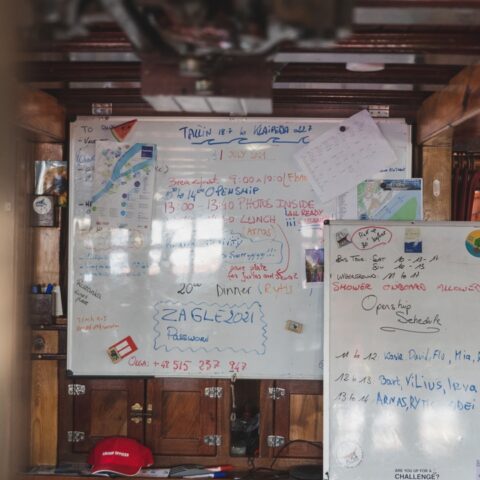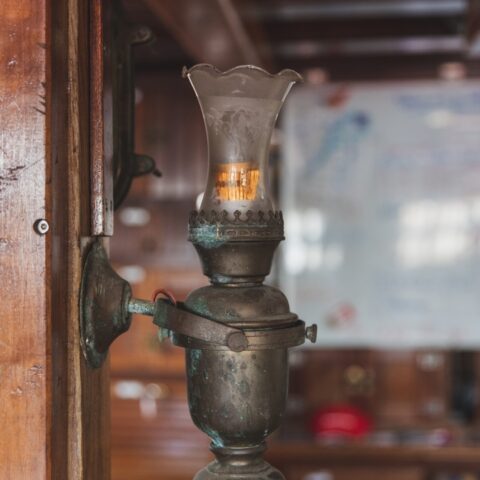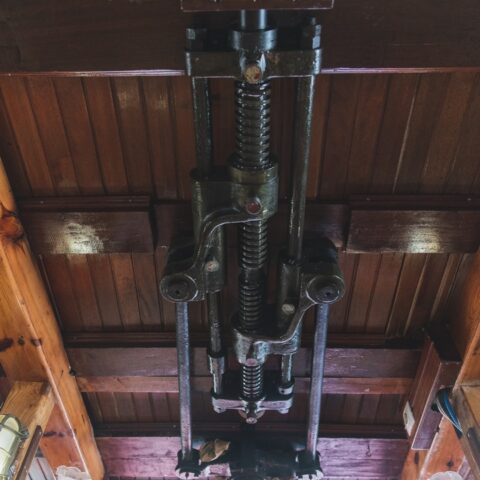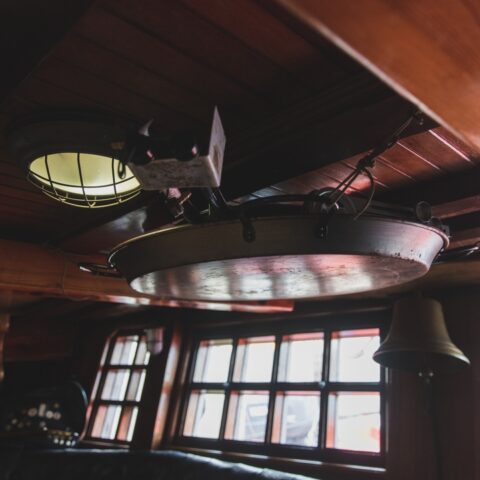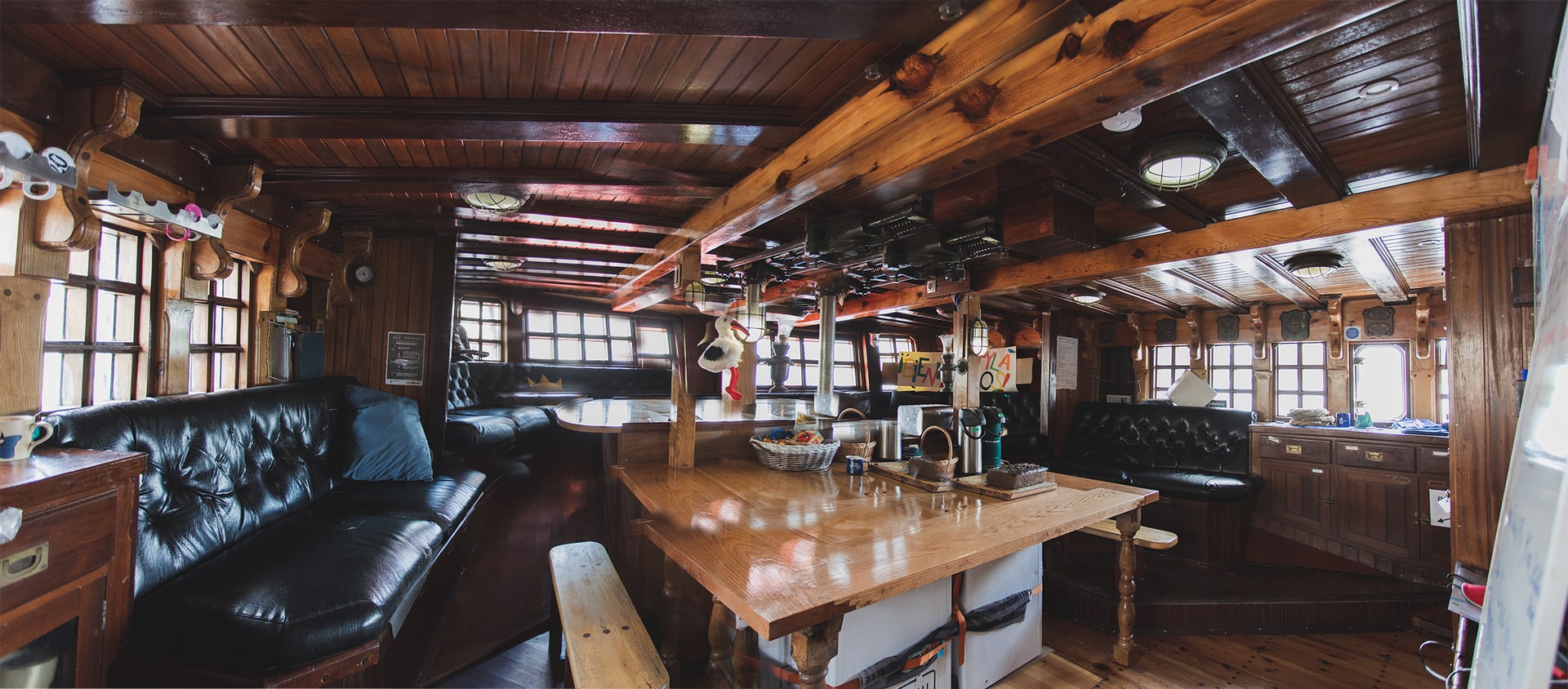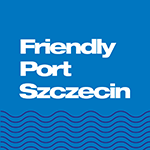Since the very beginning, the Spanish family-owned tall ship Atyla has been sailing under the flag of Vanuatu.
She was the product of an original idea by Esteban Vicente Jiménez who, after concluding his sporting career in kayaking, wanted to circumnavigate the globe along the route once taken by Ferdinand Magellan and Juan Sebastian de Elcano (1519-1522). He passionately studied drawings of Spanish sailing ships of the 19th century. After making hundreds of sketches, he finally produced a design in 1979. The design was approved by Francisco Lasa Etxaria, a professional shipbuilding engineer. While struggling with the shortage of funds for building, Jiménez successfully gathered a group of volunteers and started working on the project in 1980. The construction of the tall ship started deep into the land, in the village of Vinues, Soria Province, more than 200 kilometres away from the sea. Local trees, such as ash, oak and pine, were used for production, including two large pine trees for masts donated by the local government. The main building material for the hull was African Iroko, extremely robust and fading-resistant timber. Soon, the group moved to an abandoned building of the Eguiguren & Atxurra shipyard on the Lea River in the Basque village of Lekeitio. When the news about the project circulated, a sponsor for the circumnavigation cruise appeared (Petronor), and Jiménez received an honorary Rolex Award for Enterprise. On 15th May 1984, the ship was launched and baptized as Marea Errota to commemorate the mill which once stood in the vicinity of the shipyard. Unfortunately, fair winds changed soon after. The owner of Petronor died, and the budget for circumnavigation shrunk. A new solution was needed. In summer, the ship went to the Balearic Islands to provide daily cruises for tourists. Although seasonal, the business proved to be successful. Then, Jiménez set out for the Caribbean to search for all-year-round income opportunities. On the way, to avoid a storm in the Atlantic, he entered Tangier, Morocco, where the ship was attacked and looted. Assailants took everything, including supplies of water and fuel. Therefore, plans for the Caribbean had to be postponed and the vessel stayed at the Canary Islands. However, every cloud has a silver lining. The temporary stopover extended to 19 years. During that time, Marea Errot generated enough profit for herself, the owner and the crew from cruises organised for holiday-makers in the Playa Blanca port.
The year of 2005 marked the beginning of a 6-years cooperation with the Spanish Province of Cantabria. During this period, the vessel changed her name to Cantabria Infinita. She was based in Santander, served as a training vessel for young people and was used for promotion campaigns. After the contract expired, she returned temporarily to the Balearic Islands to perform several other duties. Finally, in 2012, Esteban Jiménez, who was nearly 60 at that time, decided to pass the command to his nephew. Born in 1989, Rodrigo de la Serna used to spent his holidays on board of his uncle’s ship. He knew the ship like the back of his hand. Sailing was part of his DNA and he already had much experience supported by his education (sea captain diploma). To mark the takeover of command, the new owner changed the ship’s name. He wanted the new name to be pronounceable in every language, and the best solution was right under his nose. Atila had been the name given to dogs by his relatives. The name, for instance, was given to a French Bulldog by his uncle Esteban. Since there was already a vessel named Atila, he just replaced “i” with “y”, and so Marea Errot became Atyla.
Rodrigo established a foundation, painted the hull red, modified the rigging (added yards), placed a dog design on a black square sail and moved the vessel to the Mediterranean Sea. In 2013, Atyla took part for the first time in races organized by Sail Training International. The Lycamobile Mediterranean Tall Ships Regatta 2013 was held on the Barcelona – Tulon – La Spezia route.
Rodrigo recognised a huge potential in the event and an opportunity to return to the roots, namely the idea of making the sailing ship open to young people. Since then, the ship was a training vessel and a frequent participant of Tall Ships Races, while her crew turned out to be the most international of the entire fleet. She also won prizes for promoting friendship and understanding, e.g. the Friendship Trophy at the SCF Black Sea Tall Ships Regatta 2014.
In 2015, the schooner changed the state of her registration. Since the Spanish administration was not very eager to register Atyla as a training vessel, the red-yellow-red flag was replaced with the flag of the Vanuatu Island, Oceania. Although the ship had never called at Vila, the town became her homeport. Although she has never managed to circumnavigate the globe, she has got all of that to come.
Her length overall is 31 meters and its maximum breadth is 7 meters. She has two masts and 9 sails (including two black ones) with the total surface area of more than 400 square meters. The manning capacity is 24 people stationed in 4 cabins.
At the end of August 2020, some fundamental changes were made to the external appearance of the ship. The red wooden sides were painted blue. It was the result of cooperation with the Bilbao Maritime Museum, which became the safe haven for Atyla during the COVID-19 pandemic. The new paint coating was made by artists from the Amiarte Association, assisted by immigrants and refugees, as part of the urban integration programme for newcomers. The rainbow WELCOME sign painted at the bow is the symbol of openness. Why has the ship been painted blue? Because blue is the official colour of Bilbao.
b
31 m
squared-rigged schooner
1984
Lekeitio (Spain)



